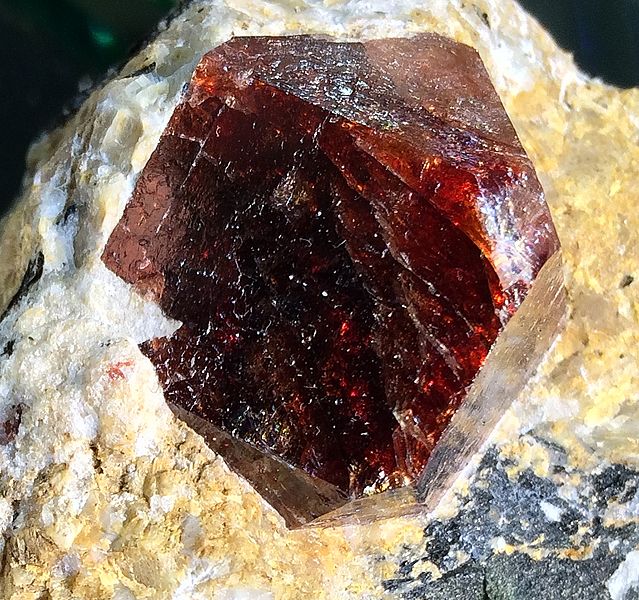One of the most important minerals for industrial and scientific discovery is zircon, and it also makes an excellent gemstone. Zircon has the chemical composition ZrSiO4 and is the primary ore of zirconium. In addition to zirconium, zircon is also valuable to science and industry because it almost always includes other rare elements in its crystal structure. Uranium, thorium, hafnium, yttrium and other rare earth elements (at the bottom of the periodic table) can be found in zircon, and these rare earth metals are crucial for modern technology.
The radioactive elements uranium and thorium are essential for understanding the age of rocks and the earth. By measuring the amount of radioactive decay, scientists can accurately date zircon crystals. The radioactive elements in zircon can internally deform the crystal structure, creating what looks like a dark halo around the grain when viewed under a microscope. These halos are called metamict zones.
Another property that makes zircon so important is its durability. It has a hardness of 7.5 and is resistant to weathering. This quality allows crystals to remain intact for incredible periods of time, making zircon the ideal mineral for radiometric dating. Some of the oldest rocks on earth have been discovered thanks to zircon grains.
Earlier this week, Elizabeth Bella and her team at the University of California and Stanford University published a study about Australian zircons dated to 4.1 billion years old (for reference, the earth is around 4.5 billion years old), one of which had carbon included in its structure. This indicates there may have been life on earth 300 million years earlier than previously thought!
Gem quality zircon is a popular diamond alternative in jewelry. Zircon can be almost any color, and when cut, it displays similar brilliance and fire to diamond, and is (in my opinion) far more interesting.
To learn more about minerals, visit the Dice Mineralogical Museum on the first floor of North Hall, open Monday, Wednesday and Friday from 1:30 p.m. to 5 p.m.!






